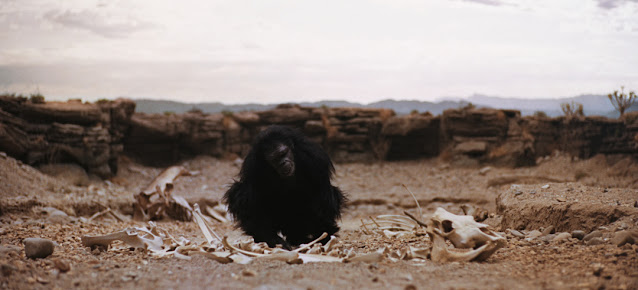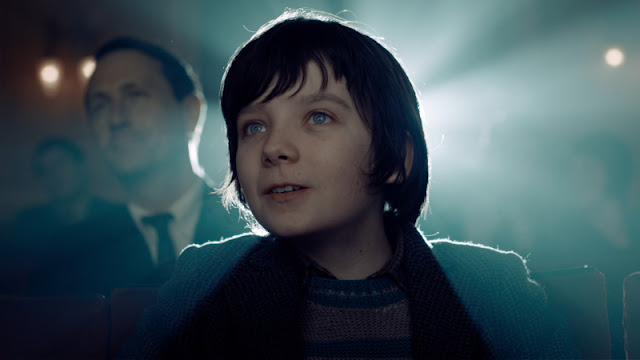The other day, Lola and I were watching some old episodes of Animaniacs. Like you do. Though she'd heard the word several times in several episodes, she decided that now was the time to ask me to define the word, "sibling." Within a few hours she'd already integrated it into her vocabulary and was using it properly in sentences. More and more she is learning to choose words to express herself unambiguously and to better define her world. But what about when definitions are less black and white and more gray?
For years I've been wanting to watch 2001: A Space Odyssey with Lola. Stanley Kubrick's meditation on human evolution is a masterpiece of visual storytelling and ideal for young minds that haven't fully transitioned from the world of pictures to words. Hopefully that was still an accurate description of Lola.
I threw it on one day after a few rounds of miniature golf and some delicious Mexican food just as a test to see if she would respond to it at all. I had a feeling that all the Dawn of Man stuff would click with what she and Becca had been learning about fossils, Mary Anning, chimps and Jane Goodall. It was extra beneficial that we'd also recently visited the La Brea Tar Pits. Watching the apes, tapirs, and leopards go about their days was akin to the numerous nature docs we've watched together as a family. She was totally on board from the get-go. And then that monolith showed up...
I knew my inquisitive daughter would have questions, but I foolishly hadn't put much thought into how to answer whatever she would throw at me. When the inevitable question of, "What is that?" came, I paused for a beat. Whatever I said was likely to become her definition going forward. And I'm just some movie loving dork. Why deprive her of piecing things together and coming to her own conclusions? It was then that I remembered my old DVD of Mulholland Dr. and the insert of "clues" to understanding the film that came with it.
If you're at all familiar with the work of David Lynch, you're likely also aware of the fact that he eschews rigid definitions as to what his work is about. A David Lynch Film is a means to illicit thoughts and feelings and they are all valid. He wants there to be, "room to dream." So his list of "clues" is really just a list of things to ponder while you watch the film. Stuff like, "Notice the robe, the ashtray, and the coffee cup" and "What is felt, realized, and gathered at the club Silencio?" They don't magically unlock the film, but musing on them does generate a more enriching experience.
So after a little bit of playing coy and saying, "I don't know. What do you think that thing is?" We'd made it to the moment when that ape starts playing around with them bones. Now I was ready to ask her, "When Jane Goodall started observing chimps, what did she discover they knew how to do?" In no time flat she replied, "They can use tools!" I followed it up with, "I wonder if that's the ape who touched the black thing?" Her mind was off to the races with theories. By the time they found the second monolith on The Moon, she was chanting, "Touch it! Touch it! Touch it!"
As your child begins to dive into the world of literature and reading, it is important to not let their visual literacy muscles atrophy as a result. Whether it's nature walks, visits to a museum, or taking in a trippy sci-fi movie every now and again, be sure to give those visual muscles a little workout every now and again. The rewards will be invaluable.
Oh, and don’t forget to leave some room to dream.










